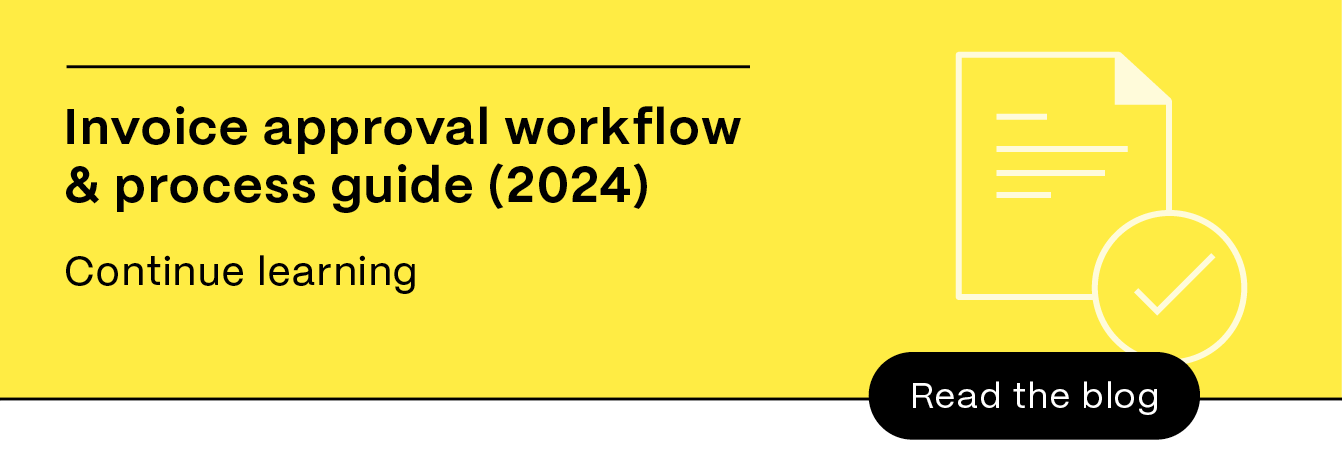
Blog
7 ways to improve your customer billing process

The client billing process significantly impacts a businesses’ revenue and overall efficiency. By streamlining billing workflows, you can encourage faster, more reliable payments, ultimately boosting profitability. Simplified customer billing is also key to client and team satisfaction, as it minimizes the friction and frustration that often come with complex processes.
This guide details seven ways to improve your customer billing process and how doing so will benefit your business.
Key takeaways
- The billing process is the set of steps companies use to request payment from customers or clients.
- There are seven effective ways to enable faster, more accurate customer payments.
- A comprehensive billing process provides many benefits, including increased revenue, cost savings, customer satisfaction, and staff retention.

What is the billing process?
The billing process is a set of steps companies use to request and collect payment from customers. Typical steps of a billing process include:
- Generating invoices
- Sending invoices
- Tracking outstanding balances
- Collecting payments
- Following up on late payments
For a number of reasons — including ease and efficiency — many companies use software to complete these tasks. Read on to learn about technology’s role in the ideal client billing process.
How can I make the invoicing process easier? 7 key steps
If you’re looking for tips on how to improve the billing process, you’re in the right place. Here are seven effective ways to help streamline customer billing.
1. Automate your billing workflow process
Implement automation tools to take over tedious, repetitive tasks in your customer billing process to save valuable time and reduce human error.
A manual billing process requires staff to spend hours creating invoices and following up on late payments. This time-consuming work can lower employee morale and lead to workflow bottlenecks. Automation can ease the process of creating and sending customer billing documents, tracking invoice status, and sending follow-up reminders. This optimization helps improve efficiency and give staff more time to focus on strategic work.
Related read: What is workflow automation and how can it help your business?
2. Implement clear payment terms
Help customers avoid misunderstandings and minimize late payments with clear payment terms. It’s important for your clients to understand how much they owe you, as well as the consequences of late payment. By providing this level of clarity and transparency, you can create a better customer experience that helps build trust.
3. Use digital invoicing and payment portals
By using digital tools for billing workflows, you can provide customers with a more efficient, hassle-free transaction experience. A recent survey by the Federal Reserve Financial Services (FRFS), found that six in 10 (61%) consumers think convenience and ease-of-use are the most important aspects of payment processes. By sending digital invoices and offering online payment portal access, your team can align with client preferences and collect payments faster.
Additionally, these tools help minimize the pitfalls of paper-based accounting processes that are prone to manual error. Not only can paper invoices easily get lost or damaged, they can lead to security gaps. Cloud-based storage systems set the standard for today’s businesses, providing easy access to files while keeping sensitive information safe. Key security features for these solutions include:
- Encryption: Protects files that include sensitive customer information using the strongest level of encryption, AES-256.
- Access controls: Set limits on which users can access documents with customer billing information, reducing access points for hackers.
- Multi-factor authentication (MFA): Requires authentication from multiple devices to stop cybercriminals from getting into accounts with stolen credentials.
4. Monitor and follow up on overdue invoices
Tracking overdue invoices and consistently following up with customers is how businesses maintain steady cash flows. When late payments pile up, business growth can be negatively impacted.
As mentioned previously, automation tools make it easier to track invoices and send follow-up notices when customer payments are delayed. This promotes clear communication with clients.
5. Simplify the invoicing process with templates
Building each invoice from scratch is inefficient and resource-intensive — not to mention error-prone. Save time and cut down on errors by creating invoice templates. To streamline your billing workflows, use standardized invoice documents that can be quickly customized with client information.
6. Integrate billing with accounting software
Sync your accounting software with billing systems for seamless workflows and more accurate financial tracking.
If you have accounting software that keeps a digital log of income and expenses, manually transferring that information into a separate billing system is tedious and time-consuming. Instead, integrate your accounting database with billing software to automatically update your general ledger with the latest customer billing information. This provides a real-time picture of your finances so you can make more informed budgeting decisions.
7. Provide multiple payment options
Consumers expect flexible payment options from companies and vendors. Customers who can choose their preferred payment methods are overall more satisfied and more likely to submit on-time payments.
Popular payment options include:
- Digital wallets
- Debit and credit cards
- Bank transfers
- ACH (Automated Clearing House)
It’s important to prioritize convenient, easy-to-track digital payment methods. However, don’t forget to factor in security. Online payments should use strong encryption to protect billing information and PII (personally identifiable information) from cybercriminals.
Whenever you collect credit or debit card payments, make sure to follow the Payment Card Industry Data Security Standard (PCI DSS). This regulation outlines how organizations must protect payment data from credit cards. If your business does not comply with these regulations, you may face hefty fines and a damaged reputation.

Benefits of improving the client billing process
An effective billing process has many benefits. 91% of mid-sized firms with fully automated client billing systems report increased savings, cash flow, and growth.
Here are the most important benefits to improving and automating your billing process:
Your team will be more efficient: Making it easier for customers to pay and for staff to process payments increases operational efficiency. With automated billing, your team will spend less time on manual tasks and can focus on higher-value activities. This not only boosts productivity, it reduces payment-processing errors.
Your customers will be more satisfied: Prioritizing transparency and streamlining the payment process for customers helps build trust and encourages client retention. Clear and consistent communication — along with easy-to-navigate online payment options — builds trust and encourages repeat business. By making billing simple and straightforward, your company will demonstrate its commitment to customer satisfaction.
Related read: How to onboard clients in 4 steps
Your staff will be more likely to stay: Automating manual tasks saves time and enhances your team’s overall efficiency and productivity. Reducing manual, monotonous work frees up your team to focus on more engaging, meaningful tasks. Employees are more likely to stay in a role that supports their growth and values their contributions.
Your business will see an uptick in revenue: Streamlining the billing process leads to a higher ROI (return on investment) for your company. In addition to cost savings from increased efficiency, faster payment processing leads to improved cash flow. This gives your business the financial flexibility needed to invest in growth opportunities, positioning it for long-term success.
Move from chaos to clarity in your customer billing process
With the steps outlined in this article, you can improve your billing process to achieve greater efficiency and increased revenue. From streamlining follow-ups to enhancing workflows with automation, there are many ways to elevate how you request and receive payments.
Start implementing these strategies now and empower your accounting department to unlock your business’ full potential.
Related Resources
